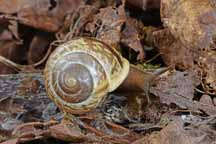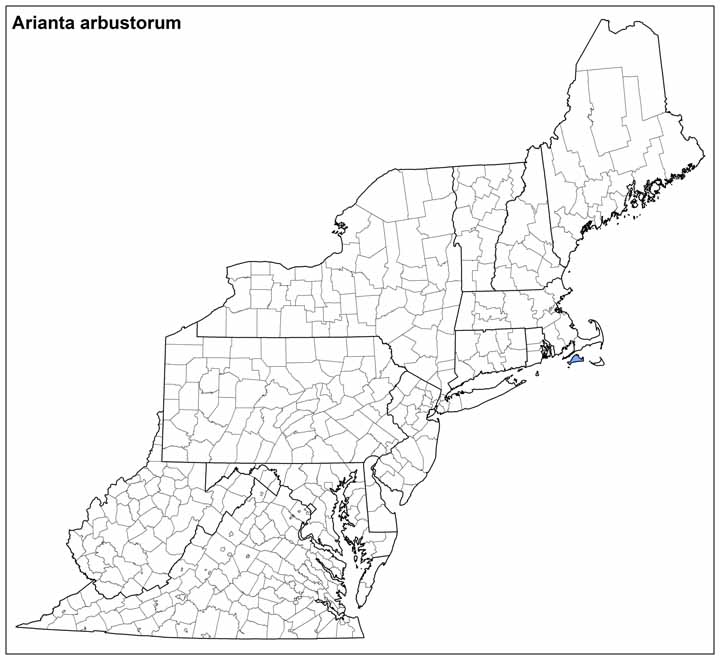Land Snails

Photo: Arianta arbustorum © Roy Anderson
Note the dark band, visible here in the final whorl.
Arianta arbustorum (Linnaeus, 1758) (non-native)
Family: Helicidae
Common name: Copse Snail
Identification
Width: 14-28 mm
Height: 10-22 mm
Whorls: 5-6
This animal has a globe-shaped shell with a reflected aperture and a very-narrowly open umbilicus (Kerney and Cameron, 1979). The shell is brownish-yellow with patchy brown markings and a dark brown band. Live animals vary in color from dark gray to brownish-yellow.
Ecology
In their native range Arianta arbustorum lives in damp meadows, hedgerows, and woods (Kerney and Cameron, 1979). In gardens and greenhouses the species can be a pest of young kale, potatoes, cabbage, carrots, celery, and spinach (in Godan 1983), though McAlpine and Forsyth (2014) suggest a low pest potential for this species in North America. Arianta arbustorum can live at high elevations and latitudes, in aggregations in herb and grass tufts in alpine meadows (Bauer, 1993).
Taxonomy
Synonyms are Helicigona arbustorum, Helix arbustorum (White-McLean, 2011).
Distribution
Arianta arbustorum is a common central European land snail, introduced into eastern Canada (Newfoundland, New Brunswick, Ontario [Grimm et al., 2009] and Prince Edward Island [McAlpine and Forsyth, 2014]), but also reported from Martha’s Vineyard in Massachusetts in 1891.
Conservation
NatureServe Rank: G5, Secure.
Ken Hotopp 12/2017
Range Map (click to enlarge)



